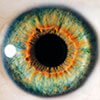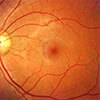Retinal Tears & Detachment
Retinal Tears, Detachment Require Quick Attention
Vitreous traction, or pulling in the peripheral retina is a natural and common part of the eye aging process, that can lead to a retinal tear or detachment. Signs and symptoms of this phenomenon include flashes or a sudden shower of floaters in the vision.
If these symptoms occur you should be evaluated by your eye care provider within 1-3 days to assess the risk of a possible retinal detachment.
A retinal tear is when the vitreous pulls and makes a break in the thin tissue layer of the retina, the thin layer at the back of the eye that acts like the film of a camera.
Retinal Tears, Detachment can be Repaired
Retinal tears can be treated with the use of cryo (freezing), or laser (light), retinopexy. These procedures are the equivalent of spot welding the thin retinal tissue to the eye wall. This prevents fluid from moving into the break within the retinal layer, as it could lead to a retinal detachment. Retinopexy is performed in an office setting, most commonly with topical or local anesthesia.
A retinal detachment occurs when the fluid migrates beneath the retinal tear and lifts the retina off the back of the eye wall. There is loss of vision wherever the retina is not attached to the eye wall. Thus, retinal detachment necessitates urgent surgical care to restore vision.
The surgery will be directed by the retina specialist. Sometimes surgery can be performed in the office; it may require more extensive procedures in the operating room.
Retinal detachments are repaired with cryopexy or laser retinopexy, air or gas bubbles, vitrectomy (removal of the vitreous gel), or a scleral buckle (silicone band around the eye wall).
Retinal Detachment
Surgery is highly successful
Retinal detachment surgeries have improved significantly in the last decade. Surgical outcomes are now anatomically successful approximately 97 percent of the time, with anatomic attachment of the retina recovering at least some visual function.
Visual outcomes are best when the detachment is discovered and treated without delay prior to involvement of the central vision.
Retinal surgical techniques using a gas or air bubble require positioning as instructed by the surgeon. This treatment also requires that you avoid high altitudes – such as traveling in the mountains or flying – until the bubble has completely disappeared.









